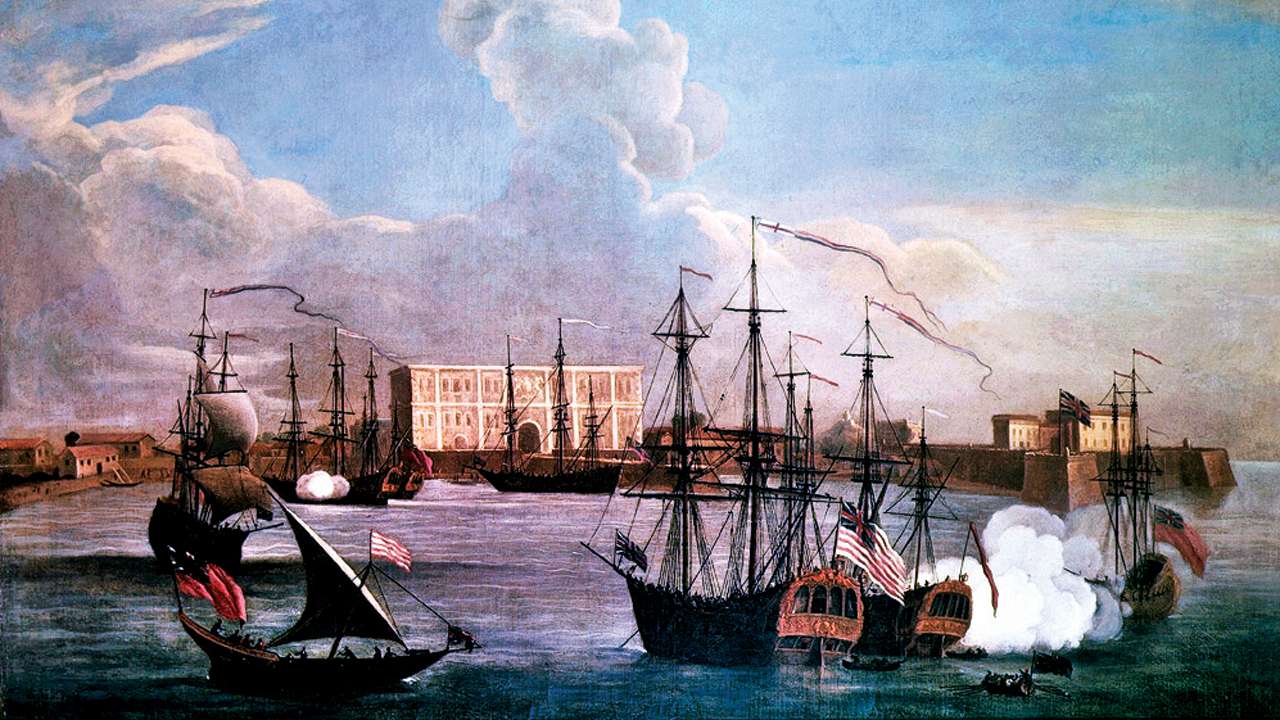
The year was 1661, and a grand marriage had taken place in Europe – that of the royal families of Portugal and England. Catherine of the house of Braganza in Portugal had married the Tudor monarch – Charles II. And along with her had come a substantial dowry – a hefty sum of money and the ports of Tangiers in Morocco and Bombay in India, at the time consisting of seven separate islands all under Portuguese control. But the granting of the port to the British was anything but straightforward. And, in fact, a number of factors came together to make it possible. History could very well have turned out totally different and there would perhaps be no Mumbai to speak of today. The seventeenth century had been one of immense tumult in Europe. England faced a civil war which temporarily put the royal family out of power and one monarch – Charles I – also got executed. Across the channel, there was resentment in Portugal over the treatment meted out to them by the Spanish.
Now the Spanish had come to hold the upper hand through an interesting arrangement. In 1580, with no heir in Lisbon, the Portuguese had agreed to come under the Spanish flag. Everything was hunky dory as long as the status quo of Portuguese nobles and aristocrats was maintained. But in the 1600s, Spain began tightening its grip – and the reaction was violent. Many skirmishes were fought and even the Dutch joined on the Spanish side – wiping out many Portuguese colonies. Their possessions in India though didn’t suffer. The Portuguese nobles came together and decided to rally behind the Duke of Braganza in 1640 and even sought the help of the French. The French, in turn, battling to expand an empire on three fronts couldn’t help much. Though it must be said they did create some problems in Catalonia, a Spanish province.
The Portuguese then turned to England, who had by then tided over the civil war and a Tudor monarch – Charles II – was once again in power. The Duke of Braganza ascended the throne in Portugal as John IV. His daughter, Catherine, was offered in marriage to Charles II to cement the Portuguese – English alliance. The ensuing treaty has many interesting points, some of which seem quite amusing from our twenty-first century viewpoint. For instance, many lines have been devoted to how Catholic Christians (Portugal was Catholic) should not be troubled by the new government of Protestants (Great Britain) or how Bassein or Vasai took centre stage as the prime place of importance, exactly opposite of today, where the seat of government is in south Mumbai.
But while men sat in Lisbon and London and signed the treaty, hardly anyone among them if any, had actually seen Mumbai. The local Portuguese governors caused enough hindrances to the British takeover. Charles II sent the Earl of Marlborough with four hundred soldiers to settle the matter, but the entire lot found themselves stranded on an island off Goa – Anjediva – while endless negotiations carried on. Here, overcome by malaria and other diseases, most of them died, making them some of the earliest casualties of the British crown. Finally, merely a hundred odd of the original four hundred managed to reach Bombay. But the Portuguese would part with only one of the islands and refused to part with the islands of Colaba, Dharavi, Mahim, Sion etc.
The British government then appointed Humphrey Cooke of the East India Company to formally take over the islands. This he did, with the final transfer to England happening in February 1665. Incredibly, Charles II found governing an unimportant place like Bombay, which hardly yielded anything, a cumbersome task and hence decided to rent out the islands to the East India Company. The grand rent amount was – hold your breath – ten pounds per year for the whole of what is today’s south Mumbai! By 1668, the transfer to the East India Company was complete. A real impetus was given to the growth of the city under its new governor – Gerald Angier. He established warehouses, the first British mint in Mumbai and built the fort at Sion in around 1669. He was in fact provided with blueprints meant for rebuilding London (itself largely destroyed in the great fire of 1666) to help plan the new city. It had taken eight long years, but the dowry had finally been received! In seven years, the population had swelled to sixty-five thousand.
As for the part we today call Suburban Mumbai, that remained in Portuguese hands till 1740 when it went to the Marathas. Salsette or Sashti island would continue to be in Maratha hands till 1782, when the British annexed it following the Treaty of Salbai.
So that’s how we ended up with today’s Mumbai – involving the Portuguese, Spanish, British, French a couple of civil wars and treaties signed by people who had never even seen the place!
The writer is the author of Brahmaputra — Story of Lachit Barphukan and Sahyadris to Hindukush — Maratha Conquest of Lahore and Attock